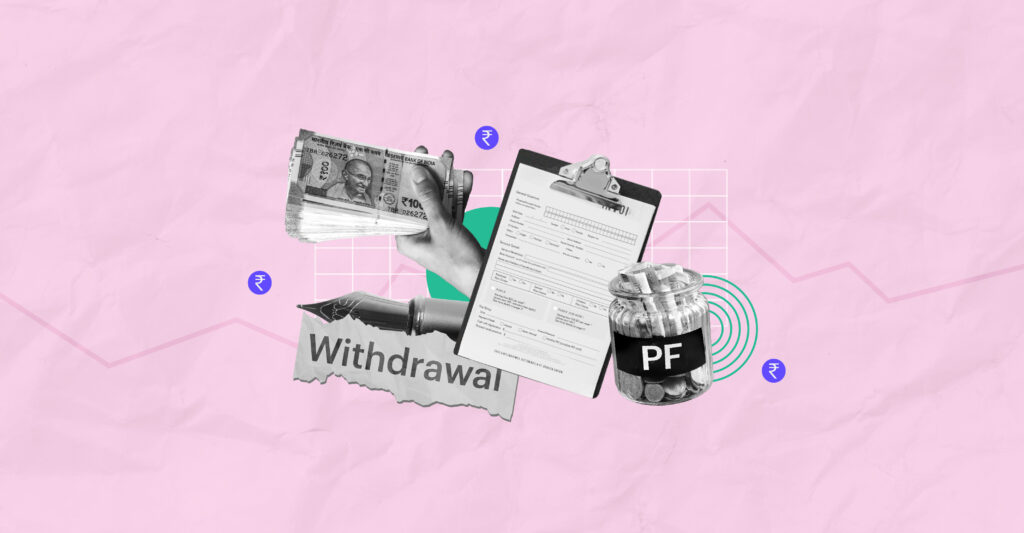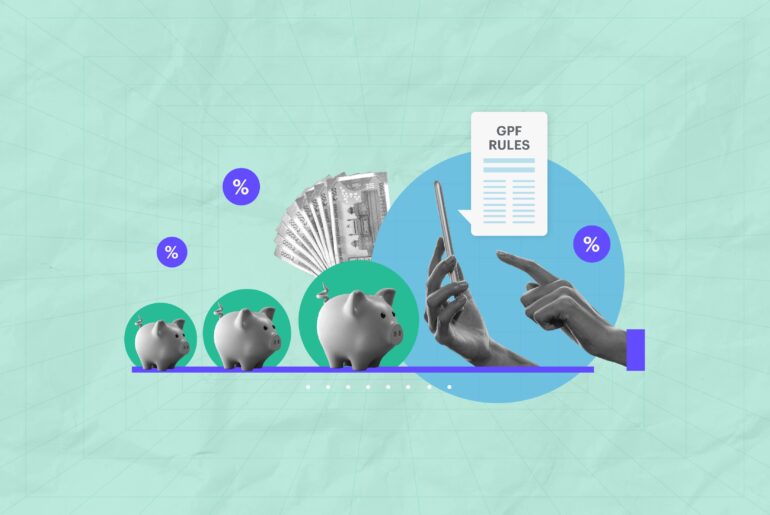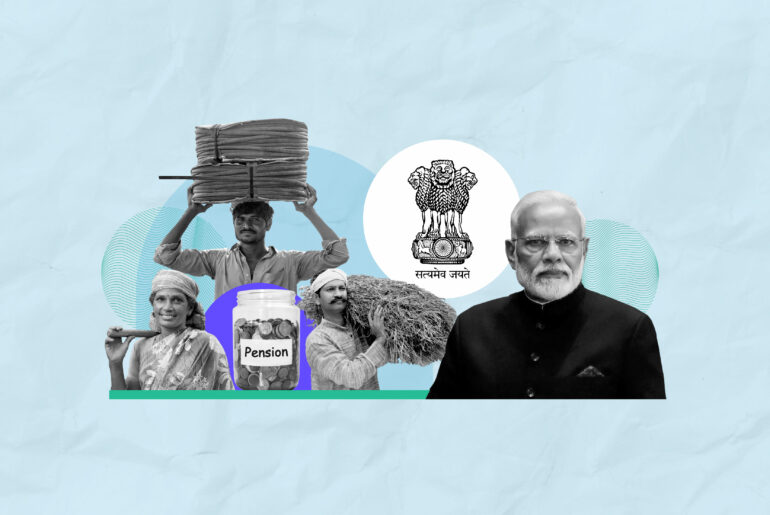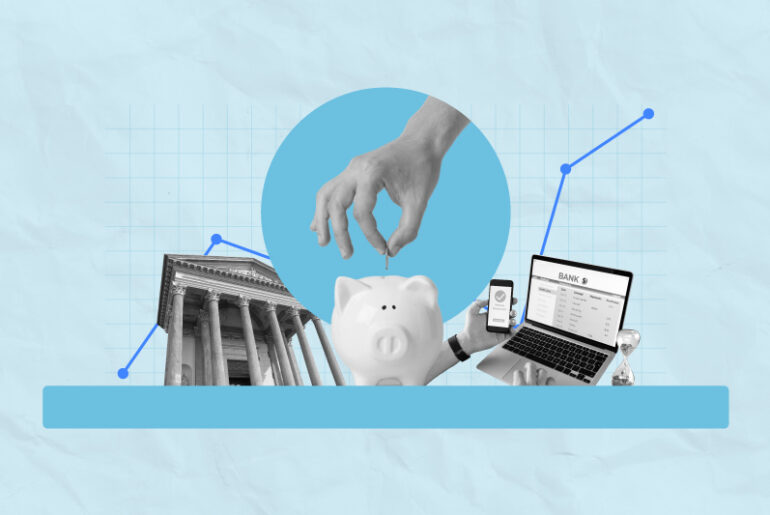Last Updated on Jul 29, 2022 by Anjali Chourasiya
Employees’ Provident Fund (EPF) is a long-term retirement scheme. Both you and your employer contribute towards the fund every month throughout your years of service. The Employees’ Provident Fund Organisation (EPFO) manages the fund and allows you to make partial and complete withdrawals. However, there are some conditions. Let’s explore them in detail, the PF withdrawal form and its online process.
Table of Contents
EPF withdrawal rules
You can withdraw your Provident Fund (PF) in two ways: complete withdrawal and partial withdrawal. For total withdrawal, there are two conditions. You need to fulfil either one of them to avail complete withdrawal.
- Retirement: You are eligible to withdraw this fund at the age of 58 yrs. After retirement, the amount is tax-free.
- Unemployed: If you have been unemployed for more than 60 days, you can withdraw your entire EPF balance. You can withdraw 75% of the balance in the first month of unemployment and the remaining balance of 25% after the second month of unemployment.
Partial withdrawal before the service of 5 yrs is taxable. Further, you can withdraw the EPF only under specified conditions. They are
| Condition | Service tenure | Limitation on amount | Withdrawal |
| Construction or purchase of a house | Continuous service of 5 yrs | The withdrawal amount is limited to 24 times the monthly salary for purchasing or 36 times in case of purchase and construction. | Only the account holder and their spouse can apply for withdrawal. |
| Wedding | Continuous service for 7 yrs | 50% of the employee’s contribution with interest | The account holder, their siblings and/or children can apply for withdrawal. |
| Medical treatment | No limitation | Employees share with interest or six times their monthly salary, whichever is lower. | The account holder, their parents, spouse, or children can apply for withdrawal. |
| Repayment of home loan | Continuous services for 3 yrs | 90% of the amount can be withdrawn | Only the account holder and their spouse can apply for withdrawal |
| Renovation of house | Continuous service of 5 yrs from the date of completion of their house construction | 50% of the employee’s contribution with interest | Only the account holder and their spouse can apply for withdrawal |
| Higher education of self or post matriculation of children | Continuous service of at least 7 yrs | Up to 50% of employee’s contribution to EPF | The account holder can withdraw this amount. |
Different EPF withdrawal forms
There are different types of PF withdrawal forms available. They are Form 10C, Form 19, and Form 31.
Form 10C
Form 10C is used to claim withdrawal benefits of the Employee Pension Scheme (EPS) and to retain your membership with the EPF. You can use this form when changing jobs and transferring/withdrawing your PF balance. You can submit the form online through the EPFO portal or can download it from here for offline application.
Form 19
EPF Form 19 is used for the final settlement of your accumulated EPF funds. If you have retired or quit your job, then you can apply for settlement with this form. In both cases, the form is filled out after two months of quitting the job. You can submit this form through the online procedure or download it from here and apply offline.
Form 31
Form 31 is used to make a partial or advance withdrawal from your EPF account. The permissible cases for Form 31 are education, wedding, house repair, medical treatment, construction/purchase of a house, unemployment, and more. You can submit this form either online through the EPFO portal or offline. You can download it from here.
Procedure for EPF withdrawal
The EPF can be withdrawn in two ways:
Physical application (offline)
To withdraw your EPF offline, download either the Composite Claim Form (Aadhaar) or Composite Claim Form (Non-Aadhaar) based on your preference.
- Composite Claim Form (Aadhaar): As the name suggests, you use this form when the information about your Aadhaar card is seeded on the Universal Account Number (UAN) portal. It also requires your UAN to be active. You can submit this form to the respective jurisdictional EPFO office without the employer’s attestation.
- Composite Claim Form (Non-Aadhaar): You use this form when your Aadhaar is not linked with the UAN portal. In this case, you need to submit the form with the attestation of your employer to the respective jurisdictional EPFO office.
Online application
The EPFO offers an online withdrawal facility. It has made the process hassle-free and less time-consuming. You need to meet the following conditions to proceed with the online withdrawal:
- The UAN should be active and linked with your active mobile number.
- The UAN should be linked with your KYC details, i.e. Aadhaar, PAN, bank details, etc.
After fulfilling the above conditions, you do not need the employer’s attestation for withdrawal.
Documents required for EPF withdrawal
The following documents are required when you are applying for PF withdrawal:
- Bank account statement in policyholder’s name
- Two revenue stamps and a Composite Claim Form in case of offline application
- Identity proof
- Address proof
- One blank and cancelled cheque
If you withdraw your PF before 5 yrs of continuous service, you are liable to pay tax on the withdrawal forms. It is to prove a detailed breakup of the amount deposited in your PF account every year.
Online EPF withdrawal process
To apply for PF withdrawal online, you must make sure your UAN is active and linked with your KYC (Aadhaar, bank account, and PAN). If you meet these conditions, follow the below-mentioned steps to withdraw your PF balance.
Step 1: Visit the UAN Member Portal. Sign in using your UAN, password, and captcha.
Step 2: Click on the ‘Online Services’ tab and select ‘Claim (Form-31, 19, 10C & 10D).
Step 3: The next screen displays all your details (basic details, KYC information, and other service information). It asks for the last 4 digits of your bank account number. Enter it and click on ‘Verify’.
Step 4: Click on ‘Yes’ to sign the undertaking certificate. Then, click on the ‘Proceed for Online Claim’ option.
Step 5: In the claim form, under the section ‘I Want To Apply For’ and select the claim you require, i.e. full EPF settlement, EPF partial withdrawal or pension withdrawal. A member will not be shown options that they are ineligible for. To give you an instance, if you are ineligible for pension withdrawal service, you will not see that option in the menu.
Step 6: Select ‘PF Advance (Form 31)’ to withdraw your PF funds. Submit the purpose of the advance, the amount required, and the employee’s address.
Step 7: Finally, submit your application. You may be required to submit scanned copies of your documents for the purpose for which you have filled the form.
You receive the requested amount in your bank account after the approval of your application by your employer. It typically takes 15-20 days for the balance to get credited to your bank account. However, in 2021, the government allowed the Ministry of Labour and Employment to reduce the claim settlement cycle to 3 days as against the previous requirement of settling the claims within 20 days.
If you are withdrawing the fund before the completion of 5 yrs of service and your total income is under the threshold limit of Rs. 2.5 lakh, you can submit Form 15G to avoid the tax deductions.
Check PF withdrawal status
To check your application status, you must log in to the UAN Member Portal. Then, go to the ‘Online Services’ section and select the ‘Track Claim Status’ option. You do not need to put a reference to check your status. It will be displayed on the screen.
To conclude
EPF offers retirement benefits. However, you can withdraw it partially in certain situations. You can fill out the application for withdrawal from the EPFO portal or submit it offline. Form 10C, Form 19, and Form 31 are available for transferring/withdrawing your PF balance, final settlement of your accumulated EPF funds, and a partial or advance withdrawal from your EPF account, respectively. Make sure you fulfil all the requirements needed to submit the forms to avoid rejection of your PF withdrawal form.
FAQ
1. Is it mandatory to submit Form 15G or Form 15H for EPF withdrawal?
If you withdraw your PF balance before completing 5 yrs of employment and your income is below the threshold limit of Rs. 2.5 lakh, you must submit Form 15G to avoid TDS (Tax Deducted at Source) deduction on your balance. If you withdraw your balance after 5 yrs, the amount is exempted from the tax.
2. How many times can I withdraw my PF?
The number of times you can withdraw your PF depends on the purpose of withdrawal:
– You can withdraw PF a maximum of three times for marriage and post-matriculation education.
– You can claim it once in case of purchasing or constructing a house.
– For medical emergencies before retirement, you can claim it every time. There is no limit to it.
3. How long does a PF claim take?
It typically takes 20 days to settle the PF claim or release the PF amount. However, with the UAN, the Ministry of Labour and Employment enables EPFO to reduce the claim settlement cycle to 3 days.
- Long Term Mutual Funds in India (2025) - Oct 29, 2025
- Muhurat Trading in 2025 – Meaning, Benefits, Latest Date and Timings - Oct 8, 2025
- How To Withdraw Mutual Funds? - Jun 6, 2025





